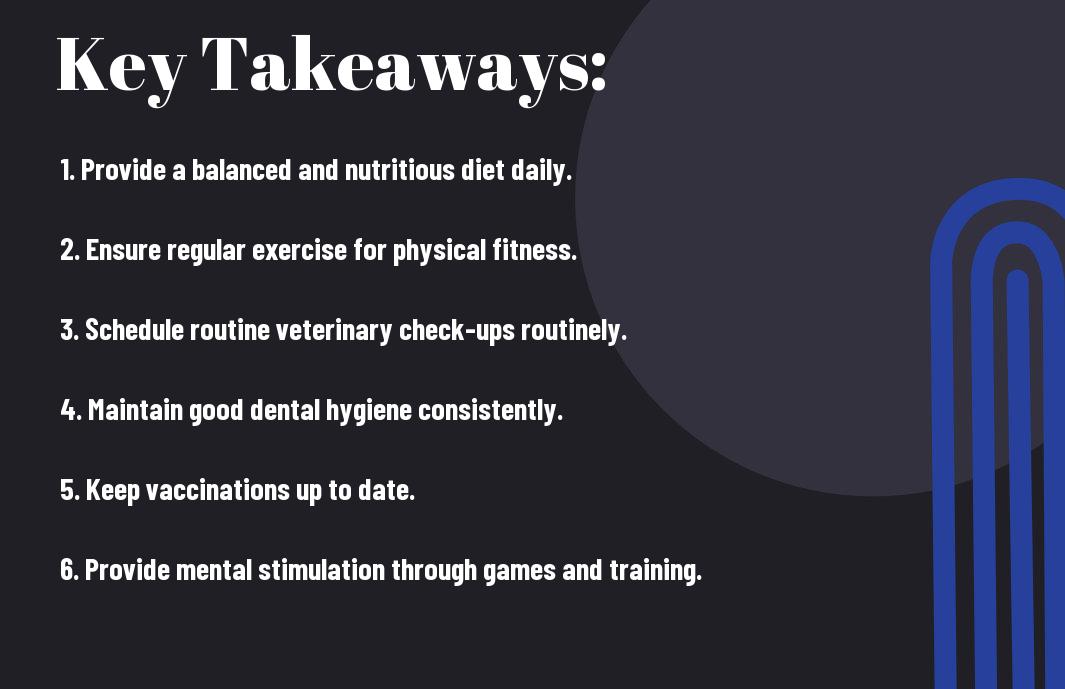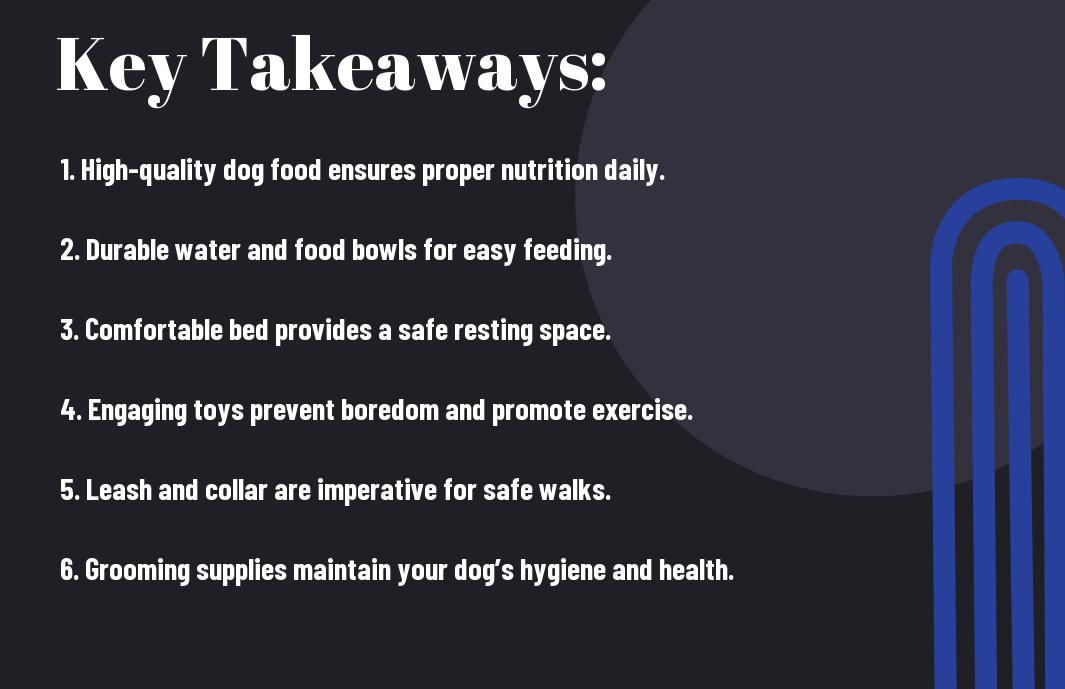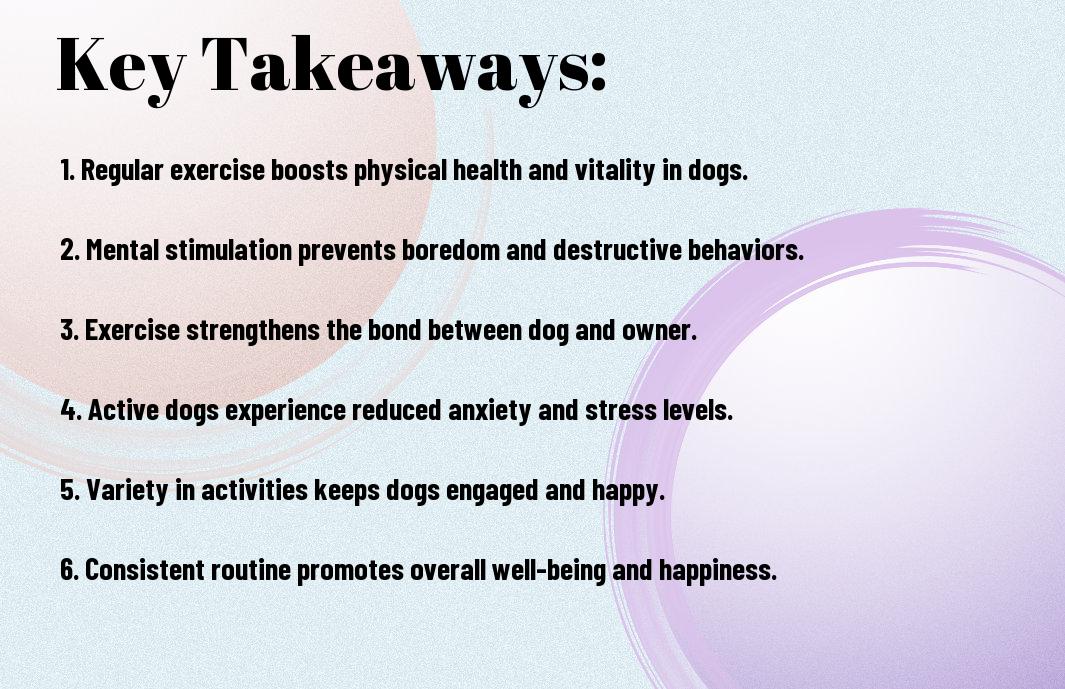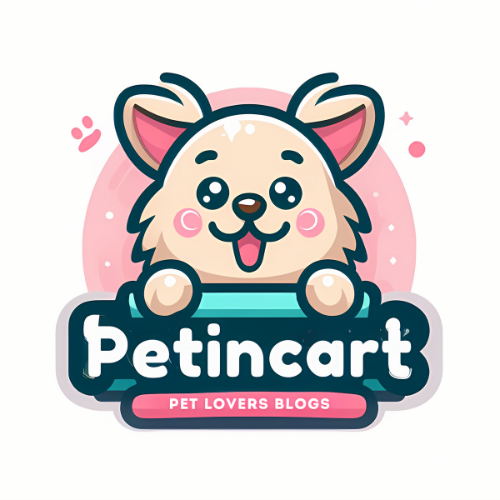Just like us, your dog requires proper care and attention to lead a fulfilling life. Ensuring their health and happiness is vital, not just for their well-being but also to strengthen the bond you share. In this post, you will discover top tips that cover nutrition, exercise, and mental stimulation, providing a well-rounded approach to keeping your furry friend thriving. With the right practices in place, you can help your dog live a longer, happier life, bringing joy to both of you.
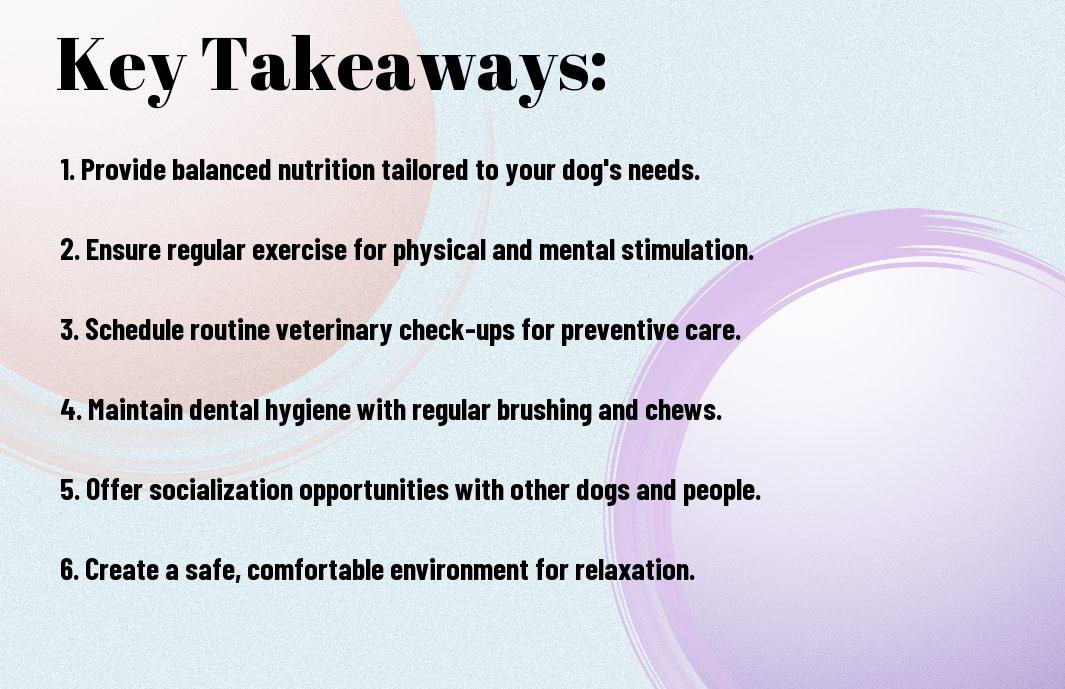
Nutrition
For every pet owner, understanding your dog’s nutritional needs is fundamental to their overall health and happiness. Proper nutrition not only supports their physical development but also contributes significantly to their energy levels, mental well-being, and longevity. A balanced diet consists of necessary nutrients like proteins, fats, carbohydrates, vitamins, and minerals, all of which play a vital role in maintaining your dog’s body functions and immune system. Ensuring your dog receives all these nutrients in the correct proportions will set the foundation for a vibrant and active lifestyle.
Importance of a Balanced Diet
An unbalanced diet can lead to a host of health issues such as obesity, diabetes, and digestive problems. It is necessary to tailor your dog’s diet according to their age, breed, size, and activity level. Puppies, for instance, require more protein and calories for growth compared to adult dogs. On the other hand, senior dogs may benefit from a diet that is lower in calories to help manage their weight while still providing necessary nutrients to support their aging joints and organs. By providing a well-rounded diet, you can help your dog thrive at every stage of their life.
Choosing the Right Dog Food
To select the best dog food for your furry friend, start by evaluating the ingredients listed on the label. Look for high-quality protein sources, such as chicken, beef, or fish listed as the first ingredient, along with whole grains and vegetables. Additionally, it is important to check if the food meets the standards established by the Association of American Feed Control Officials (AAFCO), as this ensures that the diet is nutritionally complete. Consulting with your veterinarian can also provide guidance tailored to your dog’s unique dietary needs.
Due to the vast number of dog food brands and formulas available on the market, it can be overwhelming to make the right choice. Take the time to research various brands and read reviews from other pet owners. Additionally, transitioning your pet to a new food gradually over a week can help avoid digestive upset, allowing them to adapt smoothly to the dietary change.
Treats and Snacks: What to Look For
Treats can be an excellent way to reward your dog for good behavior, but it’s necessary to choose them wisely. Look for treats that contain natural ingredients and avoid those with artificial additives, preservatives, or fillers. Giving your dog too many treats can lead to imbalances in their diet and potential health issues, so it’s advisable to keep treats to less than 10% of their daily caloric intake. Opt for healthy options that also provide additional benefits, like dental chews that help maintain oral health.
It’s important to balance treats with the rest of your dog’s diet. Consider using small pieces of fresh fruits or vegetables as low-calorie alternatives. Not only do these options often have beneficial nutrients, but they can also keep your dog engaged and happy while contributing to their overall health. With the right balance, treats can enhance your dog’s training and daily experiences without compromising their nutritional needs.
Exercise
Clearly, regular exercise is vital for your dog’s overall health and well-being. Engaging in physical activity helps maintain a healthy weight, supports cardiovascular health, and can alleviate behavioral issues. It’s not just about keeping them physically fit; exercise also has a significant impact on your dog’s mental stimulation and happiness. A well-exercised dog is a content dog, making it imperative to incorporate daily exercise into your routine.
Daily Exercise Requirements by Breed
Against common belief, not all dogs require the same amount of exercise. Different breeds have varying energy levels and exercise needs that must be taken into account. For instance, high-energy breeds like Border Collies and Siberian Huskies benefit from at least 60 minutes of vigorous activity each day, while smaller or less active breeds like French Bulldogs may only need about 30 minutes. Understanding these requirements is key to ensuring your dog remains healthy and satisfied.
Failing to meet your dog’s breed-specific exercise needs can lead to various issues, including obesity, anxiety, and destructive behavior. Therefore, it’s imperative to customize your exercise routine based on your dog’s breed and energy level. Always consult with your veterinarian if you’re uncertain about the ideal exercise duration for your furry friend.
Fun Activities to Keep Your Dog Active
Your dog’s exercise routine shouldn’t consist solely of walks. Mixing things up with fun activities can make exercising enjoyable for both you and your pet. Consider incorporating games like fetch, frisbee, or even agility training into your routine. Engaging in interactive play not only stimulates your dog’s physical abilities but also enhances your bond with them. Exploring new environments, like hiking trails or dog parks, can also make exercise more exciting.
Consequently, finding creative ways to keep your dog active will help maintain their enthusiasm for exercise. Take advantage of toys designed for interactive play, consider enrolling in obedience or agility classes, or even setting up obstacle courses in your backyard. The more varied the activities, the less likely your dog will become bored, making it easier for you to keep their exercise routine fresh and fun.
Benefits of Regular Walks
With regular walks, you provide your dog with imperative physical activity and the opportunity to explore their surroundings. This time spent together can strengthen your bond and give your pet much-needed stimulation. Additionally, daily walks can positively impact your dog’s behavioral and emotional well-being by reducing anxiety and energy levels, leading to a calmer and happier pet at home.
In addition to these benefits, walking helps socialize your dog, allowing them to encounter new sights, sounds, and other dogs. Socialization is critical for developing good behavior and confidence. Regular walks also enable you to monitor your dog’s overall health, providing an opportunity to notice any unusual changes in behavior or physical condition early on.

Veterinary Care
After bringing a dog into your life, providing the best care possible starts with understanding the importance of veterinary services. Regular visits to the vet not only ensure that your dog remains healthy but also give you peace of mind. Establishing a relationship with your veterinarian allows you to discuss any behavioral changes, dietary needs, or health concerns that may arise as your dog ages. The expertise of your vet is invaluable in guiding you toward making informed choices that impact your dog’s overall well-being.
Regular Check-Ups and Preventative Care
Preventative care involves regular check-ups, which help catch potential health issues early. By scheduling consistent visits with your veterinarian, you can establish a health baseline for your dog and monitor changes over time. This proactive approach can significantly increase the chances of successful treatment for health conditions before they become serious. Your vet will conduct thorough examinations, including dental check-ups and weight assessments, ensuring that all aspects of your dog’s health are well taken care of.
Additionally, your veterinarian can provide recommendations for proper nutrition and exercise tailored specifically for your dog’s breed, age, and lifestyle. These preventive measures play a vital role in keeping your dog active, energetic, and happy. As a responsible pet owner, committing to regular check-ups is vital for your dog’s long-term health and your own worry-free ownership experience.
Vaccinations and Their Importance
Preventative vaccinations protect your dog against various infectious diseases that can lead to severe health complications. These shots are tailored to your dog’s age, lifestyle, and risk factors, ensuring they receive the necessary immunity from potentially life-threatening illnesses. By keeping your dog up-to-date on vaccinations, you also contribute to the well-being of other dogs in your community, as herd immunity helps to prevent the spread of diseases.
Understanding the schedules and types of vaccines your dog needs can be overwhelming, but your veterinarian is there to help. They will guide you through the vaccination timeline and discuss any side effects you should be aware of. The importance of vaccines cannot be overstated; they not only protect your dog but also strengthen the collective health of the canine population around you.
Identifying Signs of Illness
By being attentive to your dog’s behavior and physical condition, you can notice early signs of potential health issues. Changes in appetite, energy levels, or bathroom habits are signals that should not be ignored. Regular monitoring can help you identify if your dog is experiencing discomfort, which may require a visit to the vet for further evaluation. Your close observation and prompt action could make a significant difference in your dog’s health outcomes.
And being aware of early warning signs, such as coughing, vomiting, or changes in weight, enables you to act quickly and seek veterinary care as needed. Regular communication with your veterinarian about any concerning symptoms will help ensure that your dog receives timely treatment and stays on the path to health. Taking this proactive approach will lead to a happier and healthier life for your beloved pet.
Grooming
Despite the common misconception that grooming is merely a cosmetic concern, it plays a significant role in maintaining your dog’s overall health and happiness. Regular grooming not only helps your furry friend look their best, but it also allows you to check for any health issues, such as skin problems or parasites, and can strengthen the bond between you and your pet. By incorporating grooming into your routine, you’ll create a happier environment for both you and your dog.
Bathing: How Often Should You Bathe Your Dog?
On average, you should bathe your dog every 4 to 6 weeks, but this can vary depending on your dog’s breed, coat type, and lifestyle. Dogs that spend a lot of time outdoors or have oily coats may require more frequent baths, while those with drier skin or less exposure may need less frequent washing. Always use a shampoo specifically designed for dogs to avoid irritating their skin.
On the other hand, it’s imperative to keep an eye on your dog’s coat and skin condition. If you notice excessive dirt or odor, it might be a sign they need a bath sooner than your usual schedule. Just like humans, every dog is different, and adjustments may be necessary to keep your buddy comfortable and clean.
Brushing and Coat Maintenance
Should you brush your dog regularly? Absolutely! Regular brushing helps to remove loose fur and dirt, preventing matting and hairballs, especially in long-haired breeds. Additionally, it promotes better skin circulation and distributes natural oils, which can keep your dog’s coat healthy and shiny. Depending on your dog’s coat type, you may need to brush them daily or weekly.
Consequently, choosing the right tools based on your dog’s coat type is imperative. For example, slicker brushes work well for dog breeds with thick, dense fur, while bristle brushes are better suited for short-haired dogs. Taking the time to brush your dog will not only keep their coat clean and free of tangles, but it will also provide an opportunity for a calming bonding experience between the two of you.
Nail Trimming and Ear Cleaning
Against a backdrop of common pet care routines, nail trimming and ear cleaning are often overlooked but highly important aspects of grooming. Keeping your dog’s nails trimmed prevents painful overgrowth and potential injury to themselves or others. Similarly, regular ear cleaning aids in preventing infections and discomfort. Aim to inspect your dog’s ears weekly and trim their nails every few weeks, or as needed to maintain a comfortable length.
The benefits of keeping your dog’s nails trimmed and ears cleaned extend beyond hygiene. By incorporating these grooming practices into your routine, you can nurture a trusting relationship with your pet, making them feel secure while attending to their health needs. Plus, this consistency ensures their comfort and reduces the likelihood of future complications. A well-groomed dog is not only healthier, but they are also happier and more social, making your time together all the more enjoyable.

Mental Stimulation
Unlike physical exercise, which primarily focuses on jogging or playing fetch, mental stimulation is equally important for your dog’s overall well-being. Engaging your dog’s mind helps to reduce boredom, alleviate anxiety, and can even decrease destructive behaviors. A mentally stimulated dog is often a happier and more well-adjusted companion. Incorporating activities that challenge your dog’s brain into their routine can enhance their quality of life and strengthen your bond with them.
Activities That Challenge Your Dog’s Mind
Around your home and in your local environment, you can find numerous opportunities to stimulate your dog’s mind. Puzzle games that require your dog to solve a problem to receive a reward can be a great way to keep their brain engaged. These activities range from simple hide-and-seek games, where you hide treats around the house, to more complex challenges that utilize commercial dog puzzles specifically designed to keep your pet guessing and thinking critically.
Interactive Toys and Games
For those days when you can’t dedicate as much time to active play, interactive toys provide an excellent alternative for mental stimulation. Toys that dispense treats, for example, not only capture your dog’s attention but also encourage them to think about how to get to the reward. Such toys often come in various levels of difficulty, making it easy to adjust the challenge as your dog improves.
This variety allows you to keep things fresh and exciting for your dog. You can rotate different types of interactive toys to prevent them from becoming bored and to continue providing mental challenges. Engaging in sessions with these toys can be a fun bonding experience as you both observe your dog’s problem-solving skills and strategies.
The Importance of Training and Socialization
Socialization and training are vital components of your dog’s mental stimulation. Providing your dog with the opportunity to interact with other dogs and people can expose them to new experiences, environments, and sounds, keeping their minds sharp. Enrolling in obedience classes or attending doggy meet-ups can also expand their social skills and confidence, creating a well-rounded pet that is comfortable navigating the world.
Activities that involve training, like learning new commands or tricks, can significantly enhance your dog’s cognitive abilities. Regular training sessions help reinforce good behavior and provide mental exercise. You can make these sessions engaging by varying the tasks and introducing new challenges, ensuring that your dog remains eager to learn and stay mentally active.
Environment
Not every environment is suitable for your furry friend. To ensure your dog remains healthy and happy, creating a welcoming and secure atmosphere is imperative. This includes giving your dog a dedicated space that feels like their own— a cozy corner filled with their favorite blankets and toys, ideally situated away from high-traffic areas. Having a safe haven allows your dog to relax and retreat when needed, which in turn reduces stress and anxiety.
Creating a Safe and Comfortable Space
Before you set up your dog’s space, consider their specific needs based on their size, age, and temperament. Puppies may require more supervision, while older dogs might appreciate a quiet area where they can rest comfortably. You can personalize their space with familiar scents, fluffy bedding, and favorite toys to create an inviting environment that encourages relaxation.
Dog-proofing Your Home
After you’ve established a comfortable spot for your dog, it’s time to dog-proof the rest of your home to ensure their safety. This means taking a close look at areas where your dog spends most of their time and removing any hazards. Consider securing electrical cords, removing toxic plants, and keeping household chemicals in high cabinets out of reach.
Home safety is paramount when it comes to your pet’s well-being. Additionally, keep an eye on small objects that could become choking hazards; toys must be durable enough to withstand your dog’s chewing habits, relegating any fragile items to higher places. The aim is to create a secure environment that allows your dog freedom to explore without the risk of injury.
Outdoor Safety Tips
Around your yard and neighborhood, assess the outdoor environment for potential dangers that could threaten your dog’s safety. When taking your dog outside, ensure that fencing is secure, and supervise their activities to prevent them from wandering off or encountering aggressive animals. Always keep an eye out for common hazards such as broken glass, sharp objects, or chemical treatments that could pose risks to your pet.
- Secure your yard with appropriate fencing to avoid escapes.
- Regularly inspect for poisonous plants that could be harmful if ingested.
- Provide shade and fresh water during hot weather to avoid overheating.
Also, when out and about, consider using a leash or harness to maintain control during walks. This not only keeps your dog safe from potential dangers, but also protects wildlife and other people in your vicinity. With these measures in place, your dog can enjoy their outdoor time while you have peace of mind knowing they’re protected.
- Plan for safe interactions with other dogs by assessing their behavior first.
- Be aware of the local wildlife and potential confrontations with animals.
- Always carry identification tags and ensure they are microchipped for added safety.
Knowing your surroundings and taking the necessary precautions will help you cultivate an environment where your dog can thrive both indoors and outdoors.
Bonding and Social Interaction
Many dog owners might underestimate the importance of bonding and social interaction for their furry friends. Developing a strong connection with your dog is necessary for their emotional well-being and overall happiness. Spending quality time together not only enhances your dog’s trust and loyalty but also strengthens your understanding of their needs and behaviors. Engaging with your pet through playtime or simply lounging together can create a nurturing environment where they feel secure and loved.
Importance of Human Interaction
Beside providing companionship, human interaction plays a significant role in your dog’s mental and emotional health. Regular positive interactions with you help to reduce anxiety and improve their social skills. By being attentive to your dog’s cues and responding in a loving manner, you promote a deeper bond that fosters confidence and reduces behavioral problems that may stem from insecurity or fear.
Additionally, consistent interaction and training sessions not only teach your dog necessary commands but also stimulate their mind, keeping them engaged and happy. Taking the time to reinforce good behavior through praise and play reinforces your role as a loving leader and enhances the bond you share.
Socializing with Other Dogs
Socializing with other dogs is vital for developing your dog’s social skills and emotional intelligence. By providing opportunities for your furry friend to interact with dogs of various sizes, behaviors, and temperaments, you help them learn how to communicate effectively and navigate social situations. This exposure can lead to more confidence and reduce the likelihood of fear-based aggression or anxiety around other dogs.
Socializing your dog should start at a young age, but it’s never too late to introduce them to new canine friends. Dog parks, socialization classes, and playgroups can offer great environments for interaction, but be sure to supervise playtime to ensure that all dogs feel comfortable and safe. Look for signs of stress or discomfort in your dog, and always prioritize their well-being during these interactions.
Dogs are naturally social animals, and fostering their ability to interact with others can lead to happier, more well-rounded pets. Allowing them to engage in play and communication with other dogs gives them invaluable skills to build relationships and promotes a healthy outlet for their energy.
Understanding Your Dog’s Behavior
Importance of understanding your dog’s behavior cannot be overstated. Each dog has its personality and unique ways of expressing feelings and needs. By being observant and attentive to their body language, vocalizations, and other behaviors, you can provide better support and care. This understanding allows you to respond appropriately to your dog’s mood, whether they are feeling playful, anxious, or needy, ensuring that their emotional needs are met.
Further, understanding your dog’s behavior extends beyond simply knowing when they’re happy or sad. It also involves recognizing triggers that may lead to stress or fear, and knowing how to manage those situations. By paying close attention over time, you will also deepen the bond between you and your dog, paving the way for a harmonious life together.
And understanding your dog’s behavior will also enrich your interactions, allowing you to cultivate a satisfying relationship that benefits both you and your pet. The more you learn about their cues and motivations, the better you can tailor your training and bonding activities, ultimately leading to a happier, healthier dog.
Summing up
Drawing together the insights shared, ensuring your dog remains healthy and happy is a multifaceted commitment that encompasses proper nutrition, regular exercise, routine veterinary care, and ample social interaction. By providing a balanced diet tailored to your dog’s needs, you not only support their physical well-being but also enhance their overall happiness. Incorporating daily walks, playtime, and mental stimulation into their routine fosters a stronger bond and keeps them engaged, which is vital for their emotional health.
Moreover, staying attuned to your dog’s health by scheduling regular check-ups with a veterinarian and being observant of any behavioral changes will allow you to swiftly address potential issues before they develop. Embracing the journey of dog ownership with patience and understanding, combined with these strategies, enables you to create a safe and loving environment where your furry friend can thrive. With dedication and a proactive approach, you can ensure that your dog enjoys a long, fulfilling life by your side.
Q: What are some important dietary considerations for maintaining my dog’s health?
A: A balanced diet tailored to your dog’s breed, age, and activity level is necessary for their overall well-being. High-quality commercial dog foods typically contain the necessary nutrients, but you may also consult with your veterinarian to explore fresh food options or special diets. Be cautious with treats; they should comprise no more than 10% of your dog’s daily caloric intake. Additionally, ensuring your dog has access to clean, fresh water at all times supports hydration and digestion.
Q: How often should I exercise my dog, and what types of activities are best?
A: The amount of exercise required varies based on your dog’s size, breed, and age. Generally, most dogs benefit from at least 30 minutes to 2 hours of exercise daily, which may include walks, playtime, or more strenuous activities like running or agility training. Engaging in a variety of activities helps keep your dog mentally stimulated and physically fit. Playing fetch, visiting dog parks, or participating in dog sports can also promote bonding with your pet.
Q: What preventive health care measures should I take to keep my dog happy and healthy?
A: Regular veterinary check-ups are key to identifying potential health issues early and providing necessary vaccinations. Parasite control, including flea, tick, and heartworm prevention, should be a routine part of your dog’s care. Dental hygiene is also important; consider providing dental chews or using special toothbrushes and toothpaste designed for dogs. Additionally, grooming practices such as regular baths, brushing, and nail trimming contribute to both health and comfort. Establishing a preventive health care routine ensures your dog can lead a long, happy life.
